
It can be hard to believe that many of the flowers we grow in our gardens today were plucked from forests and meadows.
In the wild, the original plants would have been beautiful, but perhaps sparsely flowered and the blooms short-lived.
It wasn’t until the Victoria era that planting up flower beds was even a thing. Larger properties and more leisure time meant people could start growing flowers – which is quite a luxury! – and not just food crops.
Since then, horticulturalists have selectively bred and hybridized many of our garden favorites. Some species have been tinkered with for more than 100 years.
Plant breeding is a long, multi-generational process, but nowadays we have an enormous selection of flowers that bloom profusely and continuously.
Annuals and perennials are now offered with bigger blooms, in more colors, with longer lasting fragrance, and better disease resistance than ever before.
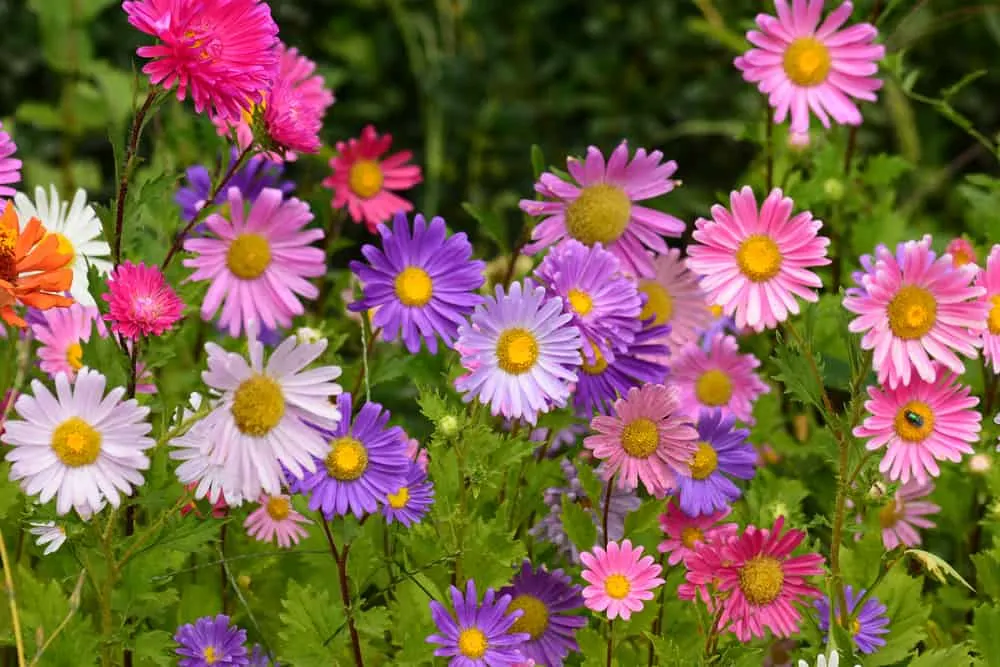
The pursuit of the perfect flower wouldn’t be complete without removing one of the garden’s most fiddly of tasks: deadheading.
And flower breeders are steadfastly working on just that – developing new crosses that will politely clean up after themselves once they’ve finished flowering.
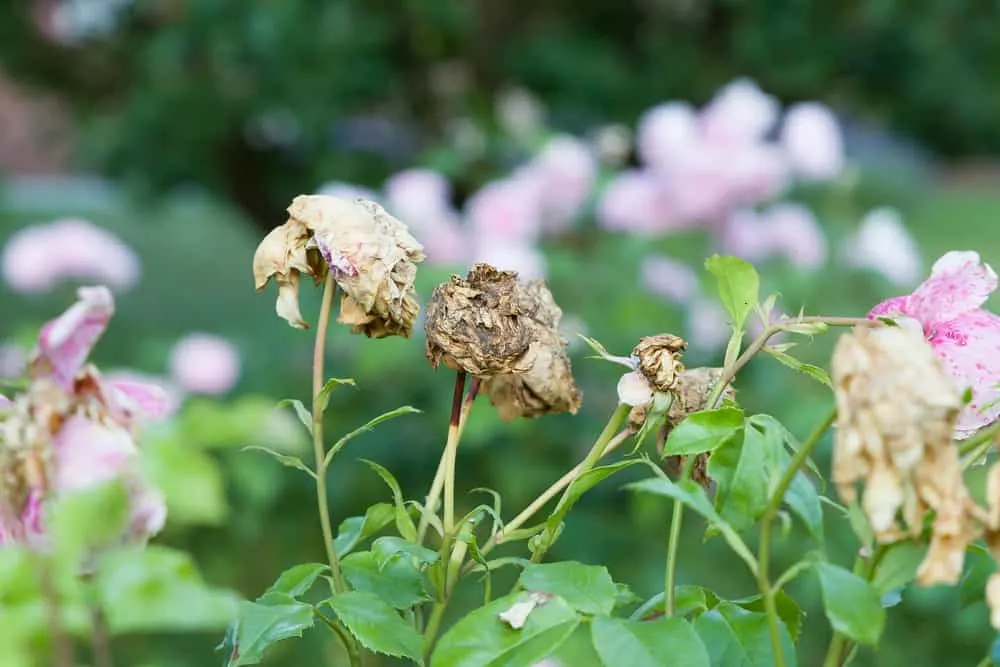
Many of the most popular annual flowers need a thorough deadheading to keep blooms a’ coming, but with these self-cleaning varieties, you can enjoy the floral show without all the fuss.
Here are 10 annual flowers that can’t stop, won’t stop blooming…
1. Ageratum ‘Artist’
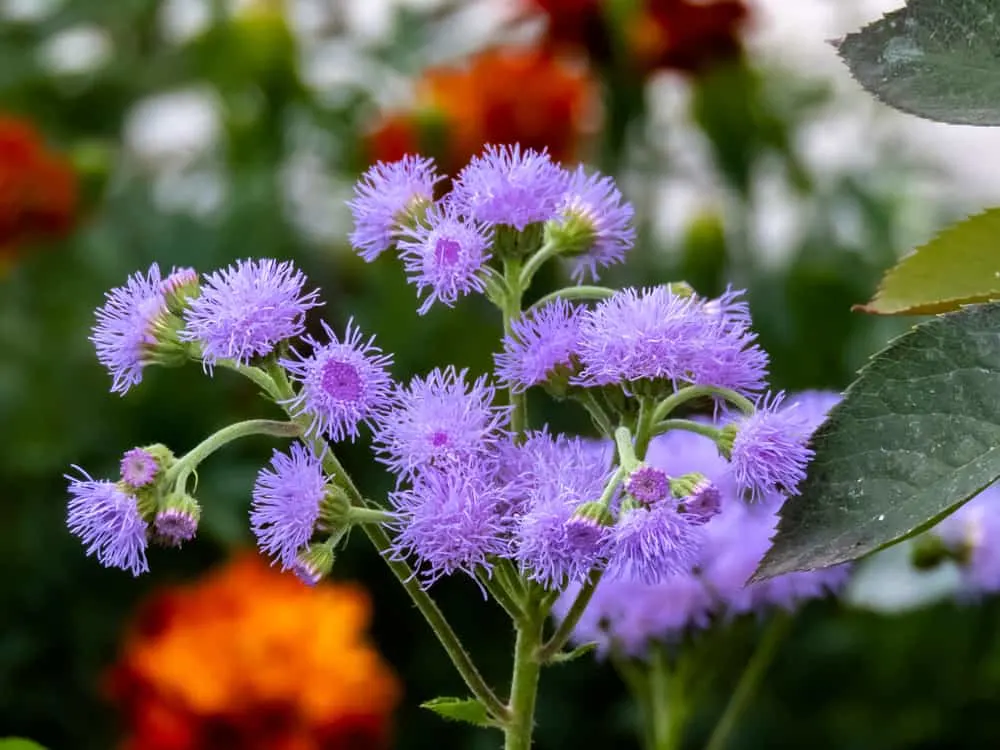
Floss flower (Ageratum houstonianum) is an annual from the Aster family that bears clusters of rounded, fluffy flowers in shades of blue, white, pink, red, or bicolored.
Its most treasured feature is its long bloom time, from early summer until frost. The pretty pom-pom flowers will drop to the ground and new ones will grow in their place. Deadheading isn’t absolutely necessary but will prompt more blooms and keep the plant tidy.
Newer Ageratum hybrids – like those in the Artist series – will “bury their dead” so no deadheading is needed. When flowers fade, they stay put on the plant and fresh blooms will quickly grow over the old ones, covering them up completely.
Hardiness zone: 9 to 10
Bloom time: May to frost
Sun exposure: Full sun to part shade
2. Cleome ‘Señorita’
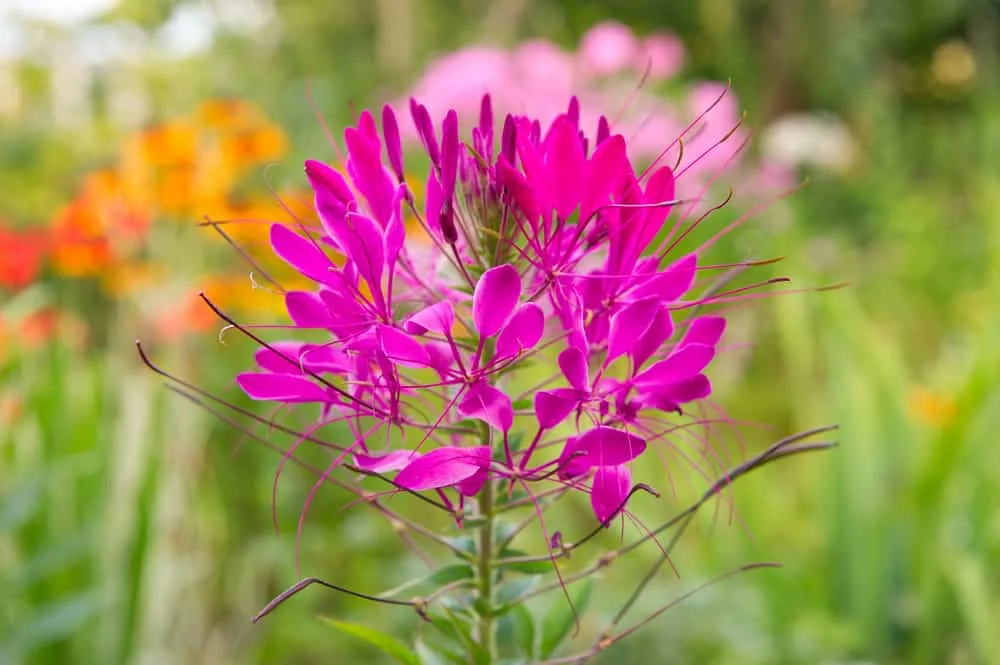
Spider flower (Cleome hassleriana) is an intriguing beauty. A fast growing annual, it forms loose flower clusters in a rounded shaped atop a rigid stem. Each four petaled flower is fanned out, with six extra long stamens protruding from the center.
The sweetly scented flowers will stay in bloom throughout much of the season. Towards fall, blooms turn to attractive seed pods.
Seeds that aren’t consumed by birds will pop up again the following season. If you don’t want the plant to self-seed, you’ll have to remove the seed heads promptly.
Related Reading: 12 Self-Seeding Plants That Will Spread All Over Your Backyard
But Señorita cleomes – a hybrid of two hybrid parents – are sterile, with smaller flowers that don’t produce seed. This variety is thorn-less, odorless, and has non-sticky foliage, with better disease resistance.
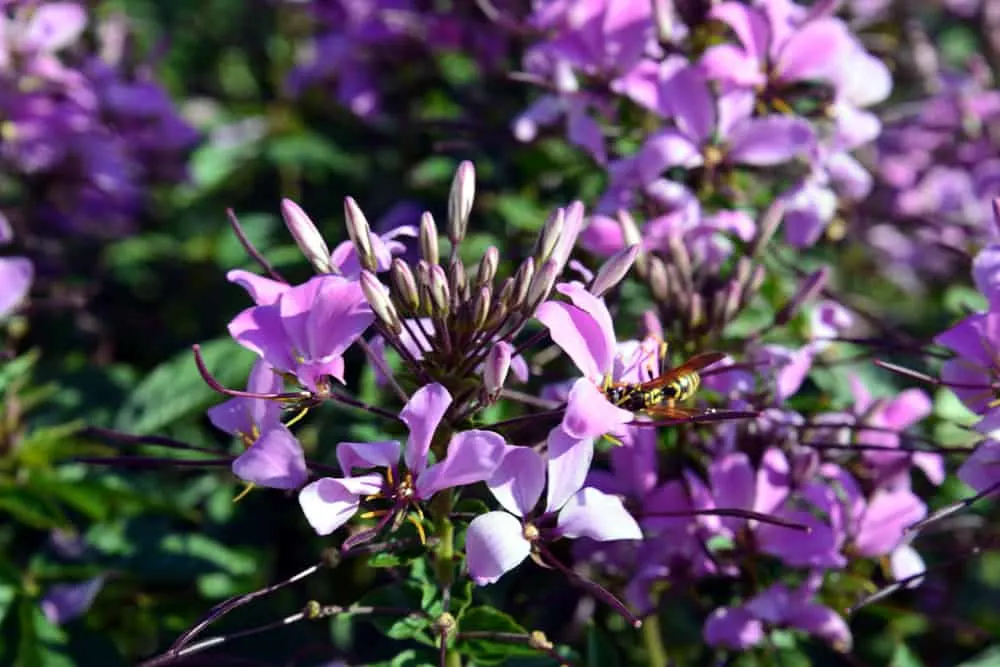
Although it lacks in fragrance, Señorita still attracts a fair few butterflies and hummingbirds.
Hardiness zone: 9 to 10
Bloom time: June to frost
Sun exposure: Full sun to part shade
3. Lobularia ‘Snow Princess’
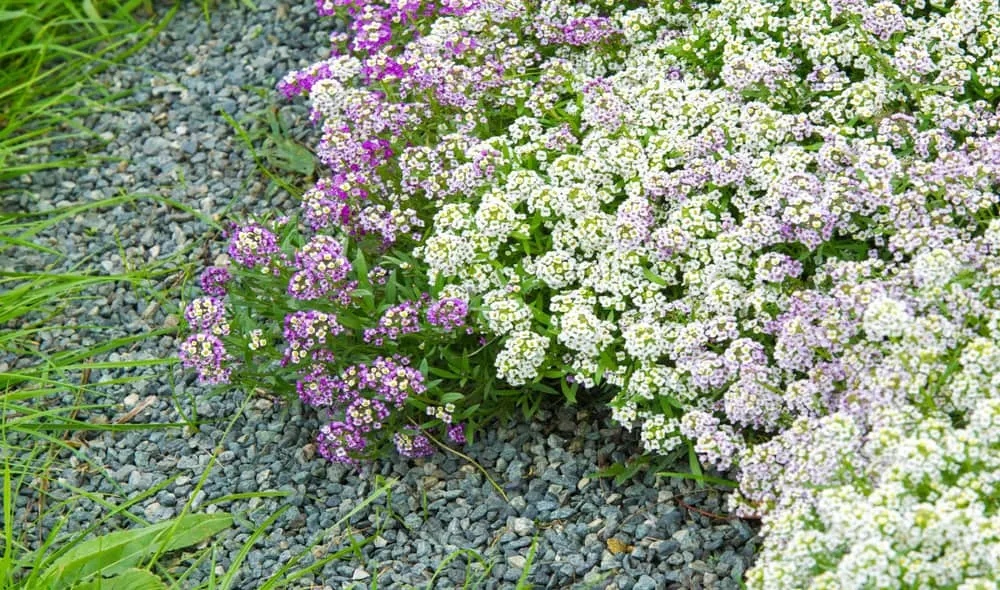
Sweet alyssum (Lobularia maritima) is a gorgeous carpet-forming low grower that will be completely covered in heavenly scented tiny white flowers from April to June.
Flowers begin to fade under the heat of summer, but plants can be sheared back by half to promote a second blooming in autumn.
More vigorous and tolerant of hot conditions, Snow Princess sweet alyssum is a result of a cross between L. maritima and L. canariensis. It blooms all season without the need to deadhead, since flowers are sterile and don’t make seeds.
Though it’s a bit taller than old sweet alyssum, Snow Princess is still stunning trailing down hanging baskets and mixed pots.
Hardiness zone: 9 to 11
Bloom time: May to October
Sun exposure: Full sun to part shade
4. Summer Snapdragon (Angelonia angustifolia)
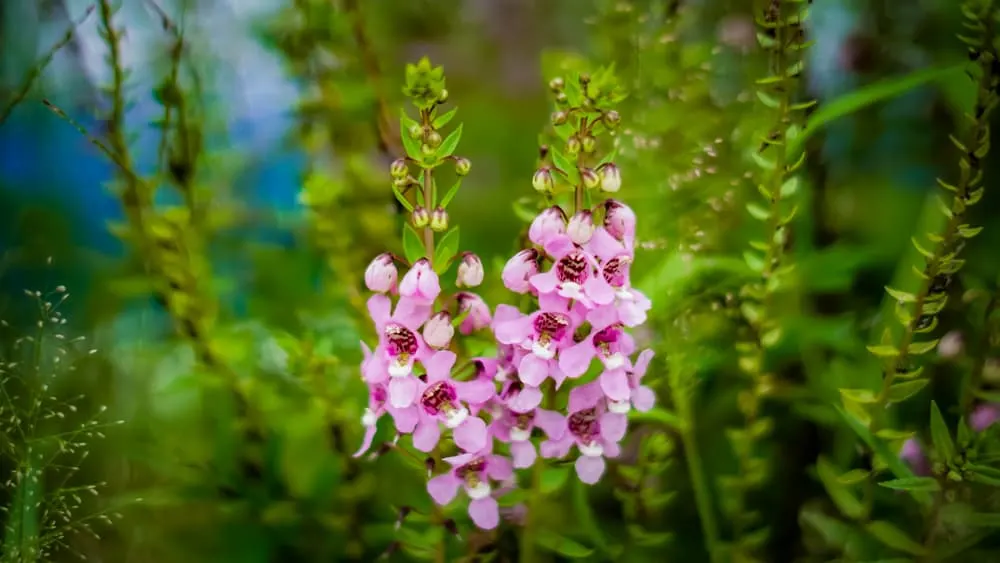
Summer snapdragon is a low-maintenance annual that blooms continuously all summer long.
Rising to around 1.5 feet tall, terminal spikes are densely packed with two-lipped flowers in white, pink, violet, or bicolor hues. Both flowers and foliage are fragrant.
This snapdragon lookalike is native to Mexico, so she is happiest when days are long and hot.
Naturally wonderful too, summer snapdragon figured out how to keep itself tidy and ever-blooming without human intervention. The flowers are self-cleaning so you’ll never have to deadhead.
Hardiness zone: 9 to 11
Bloom time: June to September
Sun exposure: Full sun
5. False Heather (Cuphea hyssopifolia)
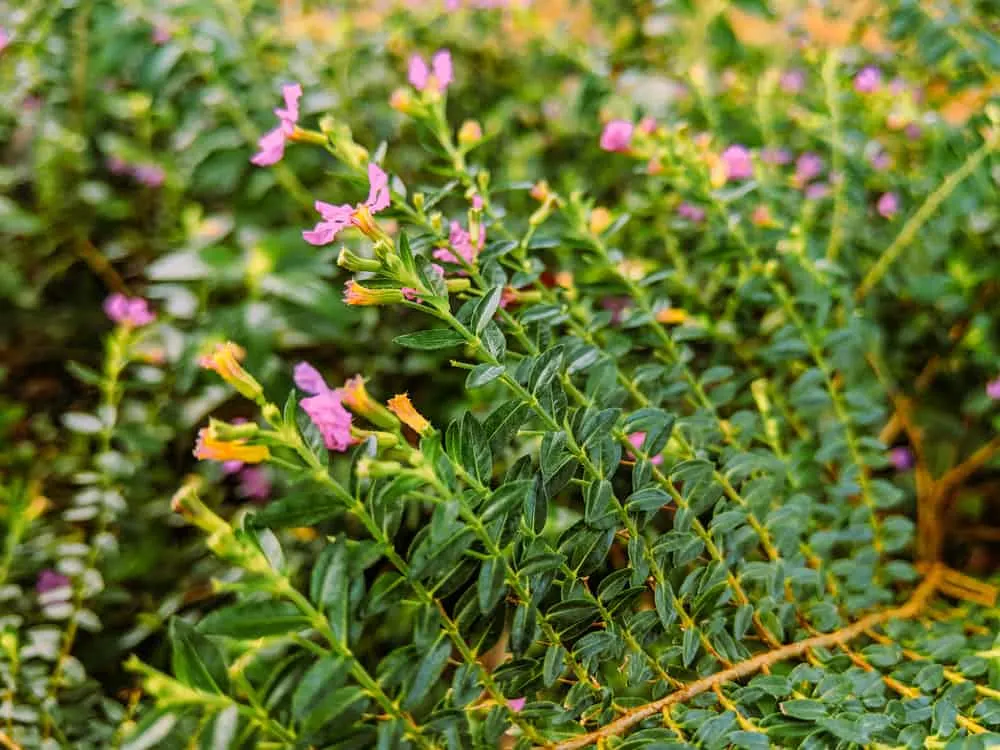
False heather is a rounded, densely branched sub-shrub from Mexico that grows about 2 feet tall.
Single flowers in white, pink, or lavender bloom en masse along graceful branches clad in glossy, deep green leaves. It will bloom and re-bloom continuously until frost.
False heather looks great in any garden situation – beds, borders, ground cover, along pathway edging, in hanging baskets and containers. Plant it anywhere you want a non-stop flower show.
And you can enjoy the blooms with zero deadheading upkeep. As flowers age, they drop off the plant and new blooms will take their place.
Hardiness zone: 9 to 11
Bloom time: June to frost
Sun exposure: Full sun
6. Osteospermum ‘Bright Lights’
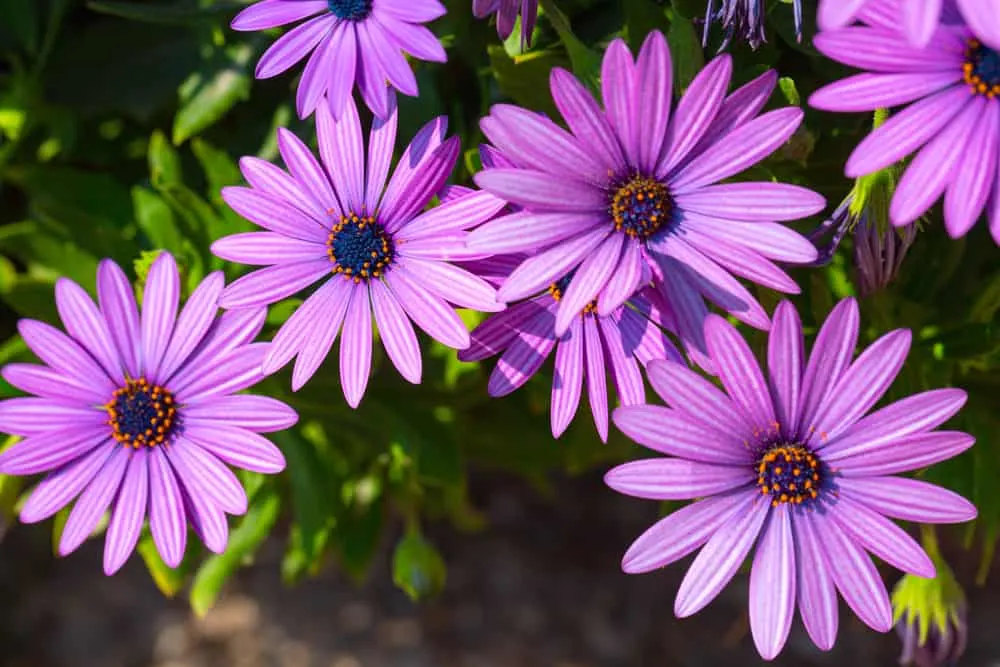
African daisy (Osteospermum spp.) is a charming one, adding a happy pop of color to any bed, border, or container mix.
The daisy-like flowers have a purplish blue center disk that beautifully contrasts the surrounding whorl of petals in white, pink, purple, orange, or bicolors.
In its native South Africa, it will bloom repeatedly in the cool, dry, Mediterranean-like climate until winter. Here, African daisy is more of a spring flower that fades under the heat and humidity of North American summers. Spent flowers will need to be deadheaded if you want to prolong the bloom.
New and improved Osteospermum hybrids, like the Bright Lights series, are much hardier. These varieties are way more heat tolerant, and will stay in bloom from spring to frost.
Another neat feature is no need to deadhead faded flowers. New blooms will grow up and over the old ones.
Hardiness zone: 9 to 11
Bloom time: May to frost
Sun exposure: Full sun to part shade
7. Toucan Canna Lily (Canna x generalis ‘Toucan’)
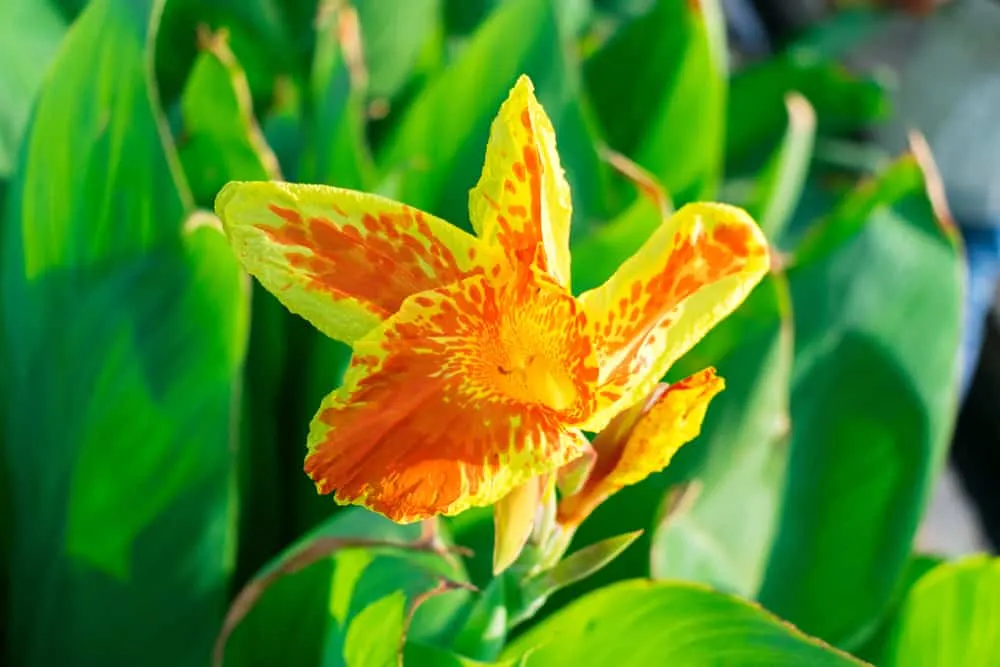
Canna lily is a big and bold landscape plant that gives the garden a tropical feel.
Equally delightful in large pots as it is massed in beds, canna lilies have enormous broad leaves and can easily reach 8 feet in height. Blooming in July and August, huge flowers – as long as 8 inches – appear at the tops of 6-foot long stalks.
Although deadheading to prolong bloom is needed on older varieties, Toucan cannas don’t require any prune work to maintain the showy flowers.
Though smaller (up to 4 feet), Toucan is fast growing and more disease resistant than other cultivars. It also blooms continuously until frost.
Hardiness zone: 8 to 11
Bloom time: May to frost
Sun exposure: Full sun
8. Globe Amaranth (Gomphrena globosa)
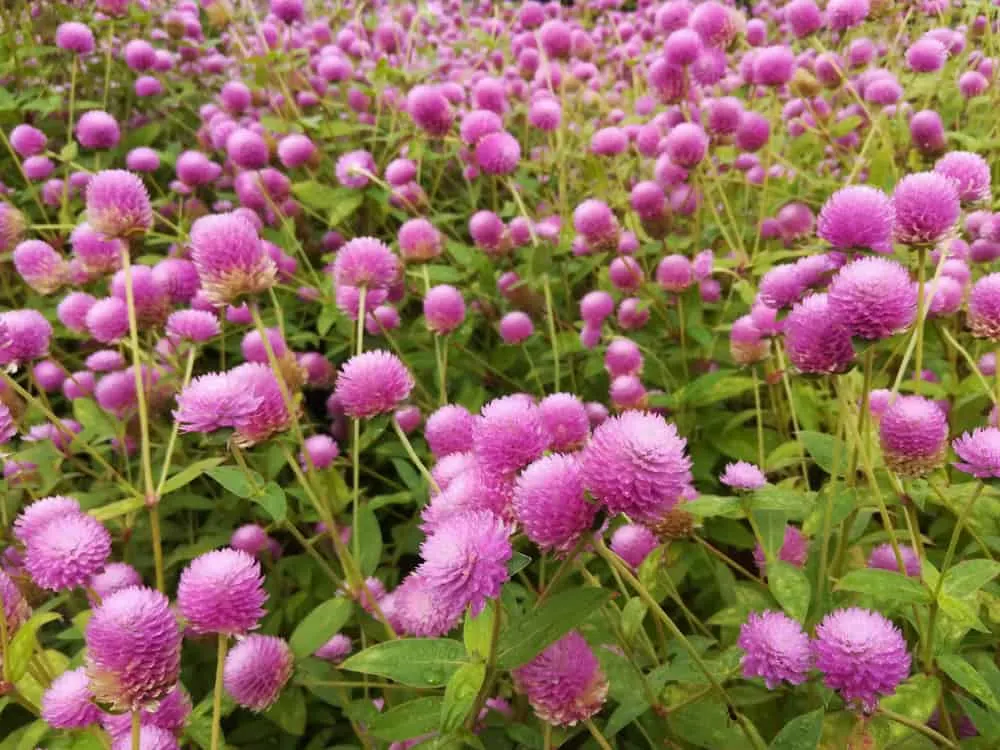
Globe amaranth is one of the easiest and low maintenance annuals you can grow. It’s drought and heat tolerant, pest and disease free, and has a very generous blooming period.
And the blooms are fascinating!
The papery tufts aren’t flowers at all, but colorful bracts in magenta, pink, purple, lilac, violet, red, or white. Look closely and you’ll see the true flowers. These are tiny and star-shaped with white or yellow petals that emerge from the very tips of the bracts.
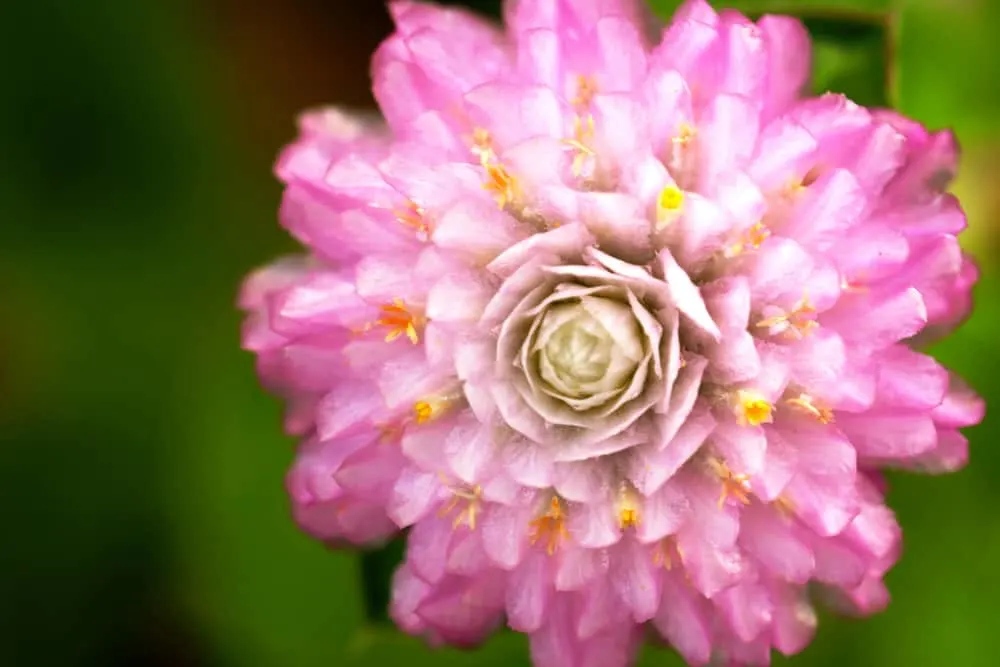
The floral bracts are a popular choice in fresh cut flower arrangements since the blooms are everlasting. Even as the tufts dry out, they retain their vibrant colors.
Dead or alive, the blossoms hold on to their beauty and so deadheading is never needed.
Hardiness zone: 9 to 11
Bloom time: June to frost
Sun exposure: Full sun
9. Sunbini Creeping Zinnia (Sanvitalia procumbens ‘Sunbini’)
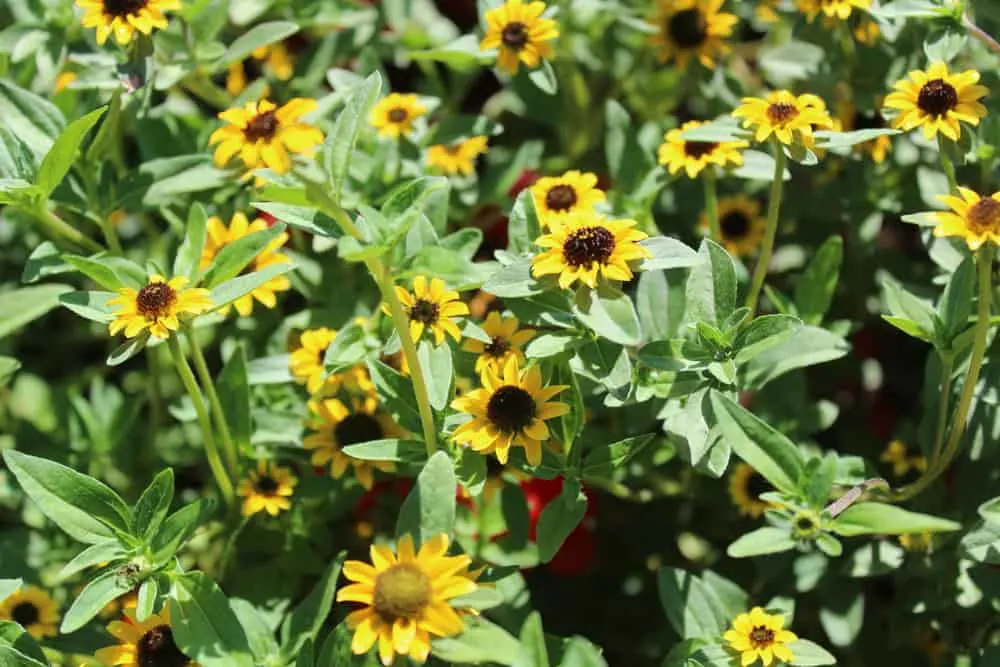
Creeping zinnia is a mounding and trailing low-grower with blooms that keep going all season long.
Reaching only 6-inches tall, the creeping zinnia vines spread out as much as 18-inches and look particularly fantastic cascading down hanging baskets, pots, and walls.
The yellow to orangish-yellow flowers are just ¾ –inch across, and look like small sunflowers more than zinnia blooms. The namesake actually comes from its felted foliage resembling that of zinnia leaves.
To keep creeping zinnia copiously blooming, it will need to be regularly deadheaded.
The Sunbini variety, though, is a great option for the carefree gardener because it quickly covers up old blooms with new ones.
Hardiness zone: 9 to 11
Bloom time: June to frost
Sun exposure: Full sun
10. Intensia Annual Phlox (Phlox drummondii ‘Intensia’)
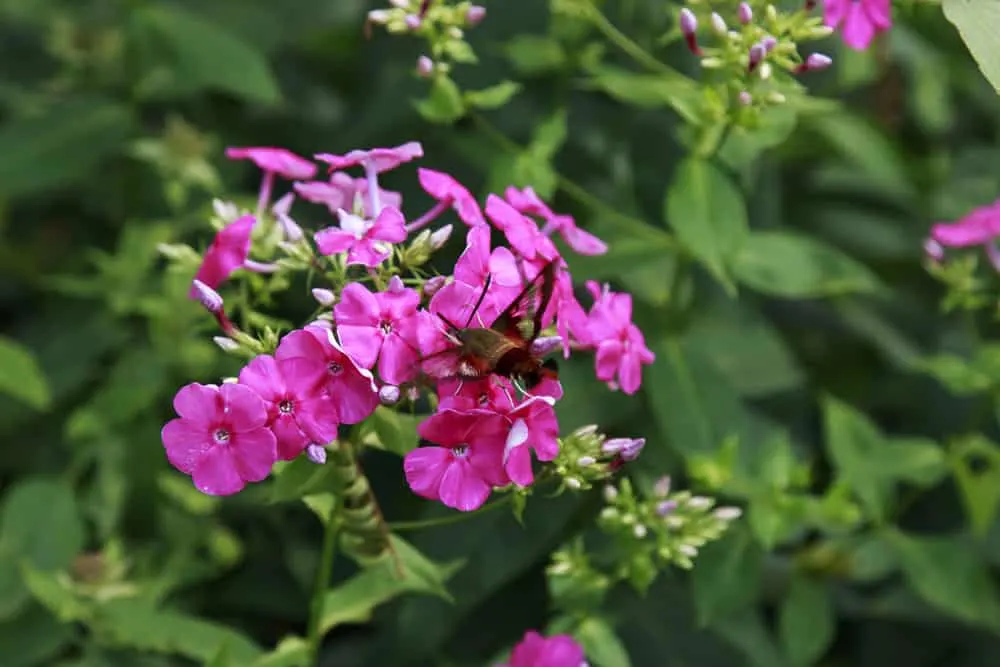
A spring bloomer from Texas, annual phlox is a fluffy mounding plant that bears fragrant flowers from May to July.
Annual phlox’s showy trumpet-shaped blooms may be rosy-red, pink, purple, lavender, or cream colored, tightly packed together in clusters. The flowers are frequently visited by butterflies and hummingbirds.
Under the heat of summer, annual phlox tends to go to seed. Deadhead the flowers to revive plants for a second bloom in autumn.
Amazingly, the Intensia series extends the blooming period from a few short weeks to until winter. And unlike with old annual phlox, it needs no deadheading for non-stop bloom.
Available in lively shades of blue, white, red, and pink, Intensia phlox will even resist the first few light frosts for an even longer season of interest.
Hardiness zone: 10 to 11
Bloom time: May to hard frost
Sun exposure: Full sun to part shade
